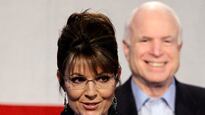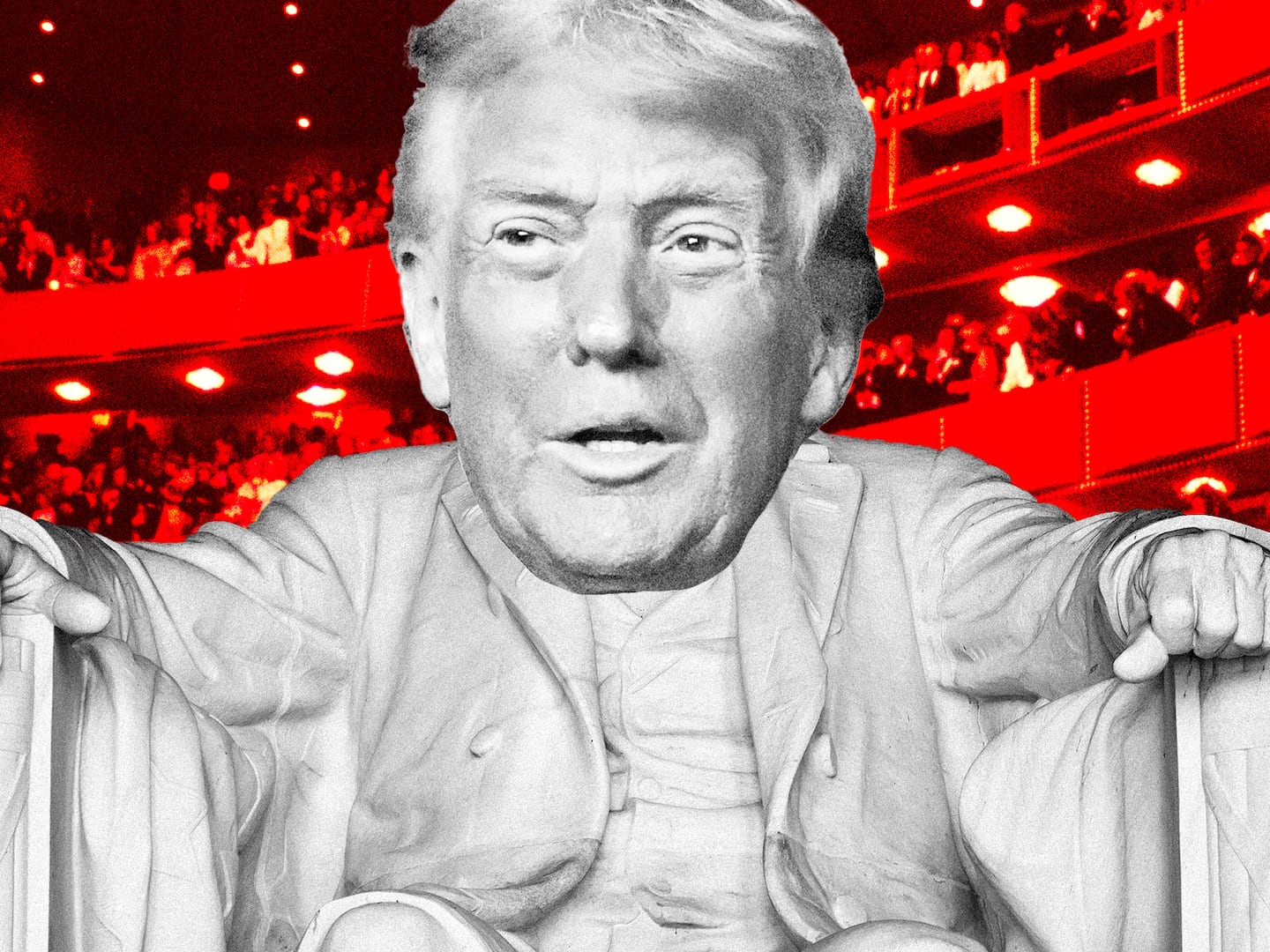
Fresh from her campaign stop to buck up John McCain, Sarah Palin is still enraging the left, and unreasonably enchanting the right. Tunku Varadarajan on why both sides—and Tina Brown—get her wrong.
Sarah Palin continues to fascinate. Each time she punches a hole in political convention or electrifies a Tea Party in Harry Reid’s home county, makes a lunge at TV stardom or a posting on Facebook or Twitter, one is moved to ask what it all means, as if she were a rare species of political unicorn. Equally fascinating—if not more so—is the reaction she continues to provoke in our intellectual and opining elites, on both left and right.
An adamant—often sulfurous—Palinphobia has, for 20 months, been the one constant among liberals in America. There can be disagreements on Afghanistan or Israel and bitter feuding over health care, but on the toxicity of Sarah Palin, all are agreed.
The elites hate Ms. Palin, in truth, because she is subversive. But her subversiveness has its bounds, and this is what makes her such a skilled politician.
Most non-Republican commentators are inclined to regard Palin with a mixture of disdain and horror; in fact, among avowed liberals, this reaction has been the standard ever since she exploded on the scene like a demotic bomb in August 2008. For them, everything about her—accent, dress, education, the names of her children, the hobbies of her husband, the college(s) she went to, the state she represented, her folksy exhortations (“Don’t retreat, reload!”), the types who flock to her rallies—is still fair game for outright dismissal and contumely.
• Tina Brown: Shame on John McCain • Meghan McCain: My Dad’s Reunion with Sarah Palin My own editor in chief, writing a few days ago about Palin’s presence at a John McCain rally, could not resist scoffing at Palin’s “ black leather dominatrix jacket,” the sort of garment that would surely have earned—had it been worn by Diane Sawyer, say, or Christiane Amanpour—the Tina Brown seal of approval. She went on to describe Palin’s presence as something that brought “shame” to McCain, in effect because Palin is a political nihilist and demagogue with whom a heroic sort of guy like McCain should know better than to consort.
On the right, by contrast, there are commentators who err in the opposite direction—partly in reaction, no doubt, to all the Palin-abuse of the last 20 months (who can forget Andrew Sullivan’s foul ravings, for instance). In an op-ed that was one part treacle and two parts overreach, Norman Podhoretz—conservative capo di tutti capi—likened Palin to a rough-diamond version of Ronald Reagan and declared that he would “rather have Sarah Palin sitting in the Oval Office than Barack Obama.” Bill Kristol has, at earlier times, espoused Palin with a corresponding vigor—a vigor that was, like Podhoretz’s paean, strikingly at odds with Palin’s apparent abilities and achievements.
So we have, on the one hand, a rejection of Palin by liberal intellectuals that can border on the hysterical, and, on the other, a clearly overblown evaluation of her by her proponents on the right. Both sides, I reckon, are quite wrong. (A question for Podhoretz: What should one do if one wants neither Obama nor Palin in the White House?)
Part of the liberal hatred (or fear) of Palin lies in her ability to draw passionate crowds that are impassioned by the wrong kind of politics. Although American elites are not inherently suspicious of crowds, they are, quite naturally, fearful of those that are ungovernable. And since Palin’s crowds—many of whom are adherents of the Tea Party movement—do not respond to the slogans and shibboleths of the liberal elite, the latter views them as alien (ergo, ungovernable). It is but a short leap from that conclusion to one that holds that these crowds are incendiary, intolerant, and, inevitably—this being a put-down that confers pariah status in America—racist. Once these crowds have been characterized as such, it is easy to strip them of their relevance to civilized political discourse. And so it is that a swath of America has come to be declared beyond the pale; and it is no surprise that this group sees itself as disenfranchised in some important way.
Palin’s biggest gift—or her most disconcerting feature, if your politics are liberal—is her ability to connect with this group of Americans. As her personal story makes clear, she started out with nothing—no money, no blue-chip education, no parental or spousal connections. She built her political career in the most isolated place imaginable, and reached high office while rearing five children. She has certain strengths that our “postmodern” elites no longer value—grit, endurance, practicality, community—but which many ordinary Americans continue to inculcate in their children.
Americans tend to love public figures who are not pretentious, who look them straight in the eye and say what they mean, and a lot of Palin's appeal lies in her closeness to this American archetype. Palin is a very talented populist, and, as such, a brilliant tool for the Republicans to wield against a president who has made a fetish of the cerebral. All this does not make Palin qualified, per se, for the highest office, and one’s anger at Beltway snobbery should not translate into uncritical encomiums for Palin. With all due respect to Podhoretz, she is not a Reagan in the rough. Reagan inspired; Palin champions the angry. The anger may be perfectly valid, but she seems unable to take her crowd to a higher plane, one that would be broadly inspiring.
The elites hate Palin, in truth, because she is subversive. But her subversiveness has its bounds, and this is what makes her such a skilled politician. Many wonder, in this context—my editor in chief included—why Palin has thrown her support behind John McCain, and not J.D. Hayworth, his Republican challenger in Arizona’s senatorial primaries. Surely one answer is obvious: Hayworth isn’t going to win, so why expend political capital on a loser? But there’s another answer, more important than the first: She has a loyalty to McCain. Did he not, after all, pull her out of Alaskan obscurity and place her on a national stage? Things went badly, of course, and almost from day two (day one was a cracker!), but she has ascribed the blame for that to McCain’s handlers. By contrast, she does not know Hayworth, and owes him nothing (especially with all his political buffoonery).
In stumping for McCain, Palin is able to reassure the GOP establishment that she is a pro, not a flamethrower, and also make clear to them that if they go into battle for November’s elections without her, they will have a much harder time getting recalcitrant Tea Partiers on board. She is offering, in effect, to deliver much of the Tea Party to the Republicans—in exchange for respect, and for a reasonable accommodation of Tea Party concerns.
Palin, it is clear, knows her own strengths. But she also knows her own limitations. She will not be president, and she knows that. (How could she not?) She may not, in fact, run for office again. Her last experience has left her scarred. (How could it not?) And so, Palin has retailored herself as a power broker, a puller of crowds, a gleeful Maroon leading her bands in raids on the Establishment, an ideological watchdog, a plainspoken Everywoman. This, one is certain, is where her true worth lies—whether in a “black leather dominatrix jacket” or out of one.
Tunku Varadarajan is a national affairs correspondent and writer at large for The Daily Beast. He is also a research fellow at Stanford’s Hoover Institution and a professor at NYU’s Stern Business School. He is a former assistant managing editor at The Wall Street Journal. (Follow him on Twitter here.)






